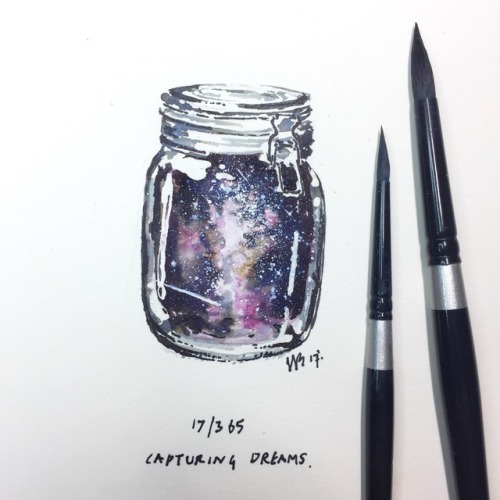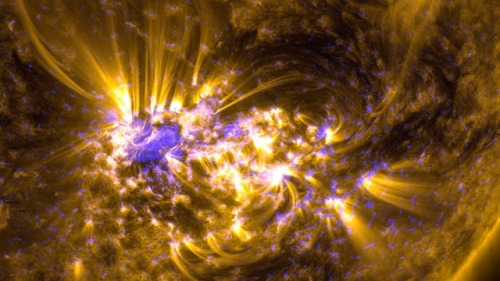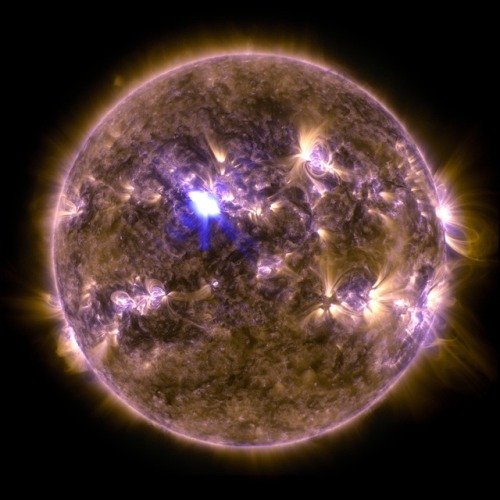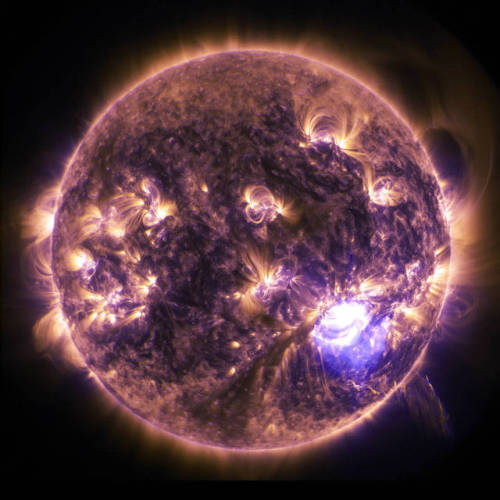Capturing Dreams: Submission By hennerzartwork

Capturing Dreams: Submission by hennerzartwork
More Posts from I-need-some-space-man-blog and Others
![Zbigniew Herbert, Translated By Czeslaw Milosz, From “Selected Poems,” [x]](https://64.media.tumblr.com/9fcecb5336fcc15e415447ed63178990/tumblr_ozfed7vFUs1qc94oqo1_500.png)
Zbigniew Herbert, translated by Czeslaw Milosz, from “Selected Poems,” [x]


I love that hermione’s reaction to finding out hagrid is hatching a dragon in his fireplace is “hagrid you live in a wooden house”
The Moon Just Photobombed NASA’s Solar Dynamics Observatory
On May 25, 2017, the moon photobombed one of our sun-watching satellites by passing directly between the satellite and the sun.

The Solar Dynamics Observatory, or SDO, orbits Earth and watches the sun nearly 24/7 — except when another body, like the moon, gets in the way. These lunar photobombs are called transits, the generic term for when any celestial body passes in front of another.
Transits are one way we detect distant worlds. When a planet in another star system passes in front of its host star, it blocks some of the star’s light so the star appears slightly dimmer. By monitoring changes in a star’s light over time, scientists can deduce the presence of a planet, and even determine what its atmosphere is like. This method has been used to discover thousands of planets, including the TRAPPIST-1 planets.

SDO sees lunar transits about twice a year, and this one lasted about an hour with the moon covering about 89 percent of the sun at the peak of its journey across the sun’s face.
When they’re seen from Earth, we call lunar transits by another name: eclipses.

Solar eclipses are just a special kind of transit where the moon blocks all or part of our view of the sun. Since SDO’s view of the sun was only partially blocked, it saw a partial eclipse. Later this year, on Aug. 21, a total eclipse will be observable from the ground: The moon will completely block the sun’s face in some parts of the US, creating a total solar eclipse on a 70-mile-wide stretch of land, called the path of totality, that runs from Oregon to South Carolina.
Throughout the rest of North America — and even in parts of South America, Africa, Europe and Asia — the moon will partially obscure the sun, creating a partial eclipse. SDO will also witness this partial eclipse.

Total solar eclipses are incredible, cosmic coincidences: The sun is about 400 times wider than the moon, but it also happens to be 400 times farther away, so the sun and moon appear to be the same size in our sky. This allows the moon to completely block the sun when they line up just right.

Within the path of totality, the moon completely obscures the sun’s bright face, revealing the comparatively faint corona — the sun’s pearly-white outer atmosphere.

It’s essential to observe eye safety during an eclipse. You must use proper eclipse glasses or an indirect viewing method when any part of the sun’s surface is exposed, whether during the partial phases of an eclipse, or just on a regular day. If you’re in the path of totality, you may look at the eclipse ONLY during the brief moments of totality.

A total solar eclipse is one of nature’s most awe-inspiring sights, so make your plans now for August 21! You’ll also be able to see the eclipse cross the country that day through the eyes of NASA – including views of the partial eclipse from SDO – on NASA TV and at nasa.gov.
Learn more about the August eclipse — including where, when, and how to safely see it — at eclipse2017.nasa.gov and follow along on Twitter @NASASun.










Solar Dynamics Observatory
The Solar Dynamics Observatory (SDO) is a NASA mission which has been observing the Sun since 2010. Launched on February 11, 2010, the observatory is part of the Living With a Star (LWS) program. The goal of the LWS program is to develop the scientific understanding necessary to effectively address those aspects of the connected Sun–Earth system directly affecting life and society. The goal of the SDO is to understand the influence of the Sun on the Earth and near-Earth space by studying the solar atmosphere on small scales of space and time and in many wavelengths simultaneously. SDO has been investigating how the Sun’s magnetic field is generated and structured, how this stored magnetic energy is converted and released into the heliosphere and geospace in the form of solar wind, energetic particles, and variations in the solar irradiance
Read more at: NASA/SDO | Wikipedia
Image credit: NASA/SDO/AIA/HMI/EVE & proccessed Stuart Rankin



About a third of the way through this one, and Tomás is the biggest disaster of a character I’ve ever encountered, but I kinda love him for it.
-
 delightfulgalaxyphilosopher reblogged this · 1 year ago
delightfulgalaxyphilosopher reblogged this · 1 year ago -
 delightfulgalaxyphilosopher liked this · 1 year ago
delightfulgalaxyphilosopher liked this · 1 year ago -
 countthestarswithmetonight reblogged this · 2 years ago
countthestarswithmetonight reblogged this · 2 years ago -
 sorakastar reblogged this · 2 years ago
sorakastar reblogged this · 2 years ago -
 somniel liked this · 2 years ago
somniel liked this · 2 years ago -
 fagathaharkness42069 reblogged this · 2 years ago
fagathaharkness42069 reblogged this · 2 years ago -
 smmagill liked this · 2 years ago
smmagill liked this · 2 years ago -
 fagathaharkness42069 liked this · 2 years ago
fagathaharkness42069 liked this · 2 years ago -
 cyndakiller reblogged this · 2 years ago
cyndakiller reblogged this · 2 years ago -
 cyndakiller liked this · 2 years ago
cyndakiller liked this · 2 years ago -
 strangerthanfictionlife reblogged this · 2 years ago
strangerthanfictionlife reblogged this · 2 years ago -
 strangerthanfictionlife liked this · 2 years ago
strangerthanfictionlife liked this · 2 years ago -
 flowercrowns-and-leatherjackets liked this · 5 years ago
flowercrowns-and-leatherjackets liked this · 5 years ago -
 ask-thedepressedkidatthetable reblogged this · 5 years ago
ask-thedepressedkidatthetable reblogged this · 5 years ago -
 edjanesworld liked this · 6 years ago
edjanesworld liked this · 6 years ago -
 astralwashboard reblogged this · 6 years ago
astralwashboard reblogged this · 6 years ago -
 dspencer336-blog liked this · 7 years ago
dspencer336-blog liked this · 7 years ago -
 the-crimson-hypocrite reblogged this · 7 years ago
the-crimson-hypocrite reblogged this · 7 years ago -
 the-crimson-hypocrite liked this · 7 years ago
the-crimson-hypocrite liked this · 7 years ago -
 magnificentmintbunny-blog liked this · 7 years ago
magnificentmintbunny-blog liked this · 7 years ago -
 jooniesbbg-blog liked this · 7 years ago
jooniesbbg-blog liked this · 7 years ago -
 littlemystery0325 liked this · 7 years ago
littlemystery0325 liked this · 7 years ago -
 mypsychonavigation-blog reblogged this · 7 years ago
mypsychonavigation-blog reblogged this · 7 years ago -
 carezzenegate-blog liked this · 7 years ago
carezzenegate-blog liked this · 7 years ago -
 ofbooksandpens-blog reblogged this · 7 years ago
ofbooksandpens-blog reblogged this · 7 years ago -
 theblooddolldiaries reblogged this · 7 years ago
theblooddolldiaries reblogged this · 7 years ago -
 ahome-a liked this · 7 years ago
ahome-a liked this · 7 years ago -
 s0lkatt liked this · 7 years ago
s0lkatt liked this · 7 years ago -
 philustrations liked this · 7 years ago
philustrations liked this · 7 years ago -
 s-n-e-t-c-h liked this · 7 years ago
s-n-e-t-c-h liked this · 7 years ago -
 pixelworld1337 liked this · 7 years ago
pixelworld1337 liked this · 7 years ago -
 erdnaaa liked this · 7 years ago
erdnaaa liked this · 7 years ago -
 fxbricxtedrexlity liked this · 7 years ago
fxbricxtedrexlity liked this · 7 years ago -
 my-names-happy reblogged this · 7 years ago
my-names-happy reblogged this · 7 years ago -
 sweet-babyyy liked this · 7 years ago
sweet-babyyy liked this · 7 years ago -
 sortasweetdreams reblogged this · 7 years ago
sortasweetdreams reblogged this · 7 years ago -
 moonsuncat liked this · 7 years ago
moonsuncat liked this · 7 years ago -
 theempressofabaddon liked this · 7 years ago
theempressofabaddon liked this · 7 years ago -
 tacotacosheep reblogged this · 7 years ago
tacotacosheep reblogged this · 7 years ago -
 tacotacosheep liked this · 7 years ago
tacotacosheep liked this · 7 years ago -
 illuniverse liked this · 7 years ago
illuniverse liked this · 7 years ago -
 chloeblevins3 liked this · 7 years ago
chloeblevins3 liked this · 7 years ago